Ancient History

The Ancient history or Antiquity is a traditional period, widely used in the periodization of human history, defined by the emergence and development of the first civilizations that had writing, therefore called "ancient civilizations". Traditionally it has been the initial period of history proper, beginning with the invention of writing, preceded by prehistory. Some periodic schemes consider that there is a stage called "protohistory", between prehistory and the Ancient Age, defined by the emergence of the first civilizations without writing.
During the Ancient Age hundreds of civilizations of great importance emerged and developed on all continents, many of which generated products, institutions, knowledge and values that are still present today, from Sumer (IV millennium BC) and Ancient Egypt, through the ancient Vedic civilizations in India, Ancient China, Ancient Greece and Rome, the Achaemenid Empire in Persia, Ancient South America, among many others.
In the course of the Ancient Age, cities and the process of urbanization, the State, law and law, as well as great religions such as Buddhism and Christianity, emerged.
Characteristics of the Old Age
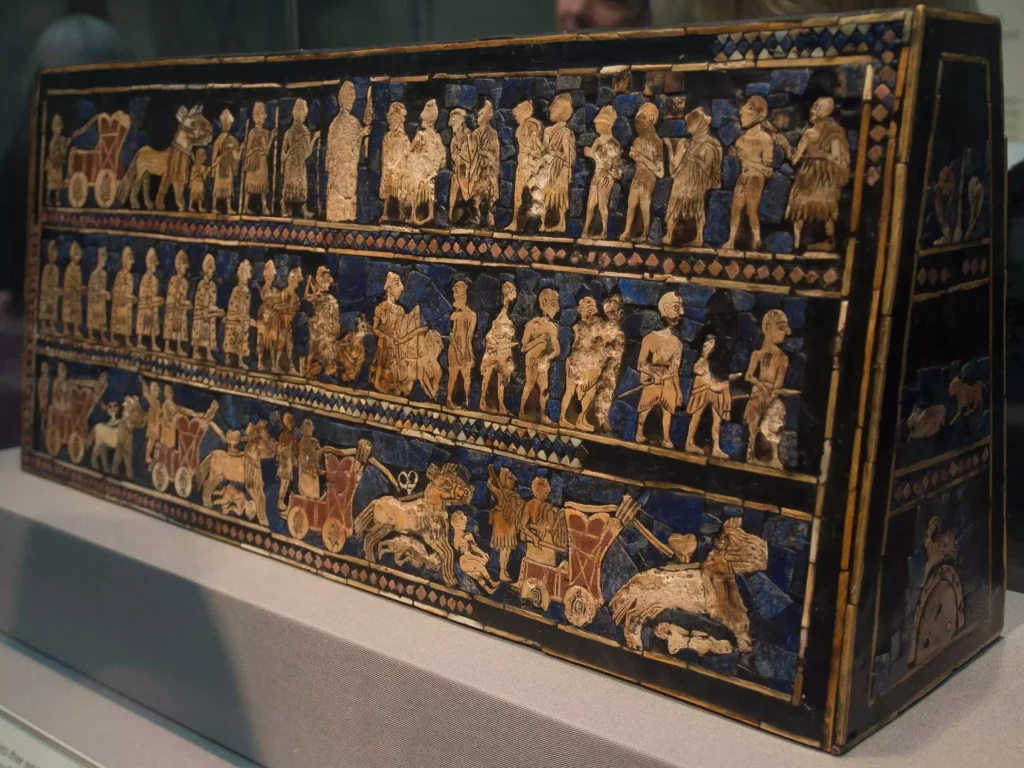
Whatever the criteria used, coinciding in time and place, both processes crystallized in the beginning of urban life (cities much larger in size, and different in function, from Neolithic villages); in the appearance of political power (palaces, kings) and organized religions (temples, priests); in a complex social stratification; in great collective efforts that require the provision of compulsory work; in the establishment of taxes and long-distance trade (everything that has been called "urban revolution").This level of social development, which was first reached in Sumer in the 4th millennium BC. C. (propitious space for the constitution of the first competitive city-states from the Neolithic substratum), had already been developing in the Fertile Crescent for four millennia. From them, and from successive contacts (both peaceful and violent) of peoples neighbors (sedentary-agricultural or nomadic-livestock cultures that are traditionally named with terms of questionable validity, more typical of linguistic families than of human races: Semites, Hamites, Indo-Europeans, etc.), the first states of great territorial extension were formed. , until reaching the size of multinational empires.
Similar processes took place at various times depending on the geographical area (in succession Mesopotamia, the Nile Valley, the Indian subcontinent, China, the Mediterranean basin, pre-Columbian America and the rest of Europe, Asia and Africa); in some particularly isolated areas, some current hunter-gatherer peoples had not yet abandoned prehistory, while others violently entered the modern or contemporary age at the hands of colonization from the 16th to the 19th centuries.
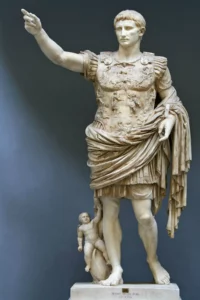
The peoples chronologically contemporary to the Written History of the Eastern Mediterranean can be the object of protohistory, since the sources written by Romans, Greeks, Phoenicians, Hebrews or Egyptians, in addition to archaeological sources, allow it to be done.
Classical Antiquity is located at the height of Greco-Roman civilization (5th century BC to 2nd century AD) or, in a broad sense, throughout its duration (8th century BC to 5th century AD). C.). It was characterized by the definition of innovative sociopolitical concepts —those of citizenship and personal freedom, not for everyone, but for a minority supported by slave labor—, unlike the river empires of ancient Egypt, Babylon, India or China, for which defined the imprecise category of «Asian mode of production», characterized by the existence of an all-embracing power at the top of the empire and the payment of tributes by the peasant communities subject to it, but of free social status (because even if there is slavery, does not represent the main labor force) .
End of the Old Age
The end of the Old Age in Western civilization coincides with the fall of the Western Roman Empire, in the year 476 (the Eastern Roman Empire survived the entire Middle Ages until 1453 as the Byzantine Empire), although such a discontinuity is not observed in other civilizations. Therefore, the later divisions (Middle Ages and Modern Age) can be considered valid only for the former, while most of Asia, Africa and America are subject to their own periodization in their history.
Some culturalist authors extend European Late Antiquity to the sixth and seventh centuries, while the French "mutationist" school extends it to some time between the ninth and eleventh centuries. Different interpretations of history emphasize economic issues (transition from the slave mode of production to the feudal mode of production, from the crisis of the third century), political or ideological (disappearance of the empire and installation of the Germanic kingdoms from the fifth century), religious (replacement of polytheistic paganism by theocentric monotheisms: Christianity —fourth century— and later Islam —seventh century—), philosophical (ancient philosophy by medieval) and artistic (evolution from ancient —classical— art to medieval art —paleochristian and pre-Romanesque—) .
Ancient Geography

The civilizations of Antiquity are geographically grouped by historiography and archeology in areas where different peoples and cultures were especially linked to each other; although the areas of influence of each one of them managed to interpenetrate each other and go much further, forming empires of multicontinental dimensions (the Persian Empire, that of Alexander the Great and the Roman Empire), thalassocracies ("government of the seas" ) or trade routes and the exchange of products and ideas over long distances; although always limited by the relative isolation between them (obstacles of deserts and oceans), which becomes radical in some cases (between the Old World and the New World). ancient navigation, especially the nature and extent of the expeditions that the early Polynesian cultures necessarily had to undertake (at least up to Easter Island), is still a controversial issue. On some occasions, experimental archeology has been used to prove the possibility of contacts with America from the Pacific. Other concepts of application discussed are the priority of diffusionism or endogenous development for certain cultural phenomena (agriculture, metallurgy, writing, alphabet, currency, etc.) and the application of evolutionism in archaeological and anthropological fields.
Ancient Near East

The Ancient Near East or Ancient East is the term used to describe the areas of Western Asia and Northeast Africa where civilizations prior to the classical Greco-Roman civilization arose, and which is currently called the Near East or Middle East. For the same region, Vere Gordon Childe coined the name Fertile Crescent, defining it as the area where the Neolithic Revolution first arose (8th millennium BC) and later the Urban Revolution (4th millennium BC). They are the current countries of Iraq, part of Iran, part of Turkey, Syria, Lebanon, Israel, the Palestinian Territories, Jordan, Arabia and Egypt. Chronologically, it is understood as a period that goes from the beginning of historical civilizations around the fourth millennium BC. C. (in this area the appearance of writing, cities and temples is simultaneous with the Bronze Age) until the expansion of the Achaemenid Empire in the 6th century BC. c.
Ancient Mesopotamia
The mouth of the Tigris and the Euphrates in Lower Mesopotamia gave rise to the accumulation of alluvial deposits in the marsh area that is gradually gaining ground from the sea off the receding coast of the Persian Gulf (currently more than a hundred kilometers from the site). which it occupied in the fourth millennium BC, and with the two confluent rivers —Shatt al-Arab—). The area was propitious (with the condition of maintaining a great capacity for social organization for collective work in the construction of hydraulic works such as canalizations, irrigation and drainage) for the development of the Sumerian city-states (Ur, Uruk, Eridu, Lagash ). Are, in competition with each other and with the nomadic peoples of the steppes and surrounding deserts (those from the south and west encompassed by historiography in the broad ethnic concept of Semites and those from the east in the Iranian area where the Elamite civilization was formed), as well as with the nuclei that were formed further north (Babylon) and further north still in Upper Mesopotamia (Ninive); They developed the constitutive characteristics of civilization (complex society) and the state (political-ideological superstructure): temple, priestly class and organized religion, border, territorial war, army, propaganda, taxes, bureaucracy, monarchy, constructions such as walls and ziggurats. ; and the feature that marks the beginning of history: the recording of memory in writing. as well as with the nuclei that were formed further north (Babylon) and further north still in Upper Mesopotamia (Ninive).
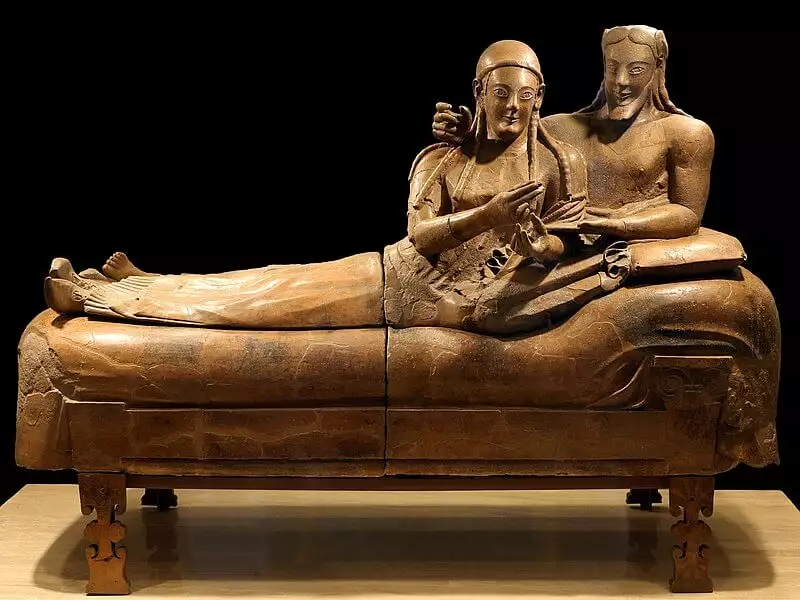
They developed the constitutive characteristics of civilization (complex society) and the state (political-ideological superstructure): temple, priestly class and organized religion, border, territorial war, army, propaganda, taxes, bureaucracy, monarchy, constructions such as walls and ziggurats. ; and the feature that marks the beginning of history: the recording of memory in writing. as well as with the nuclei that were formed further north (Babylon) and further north still in Upper Mesopotamia (Ninive); They developed the constitutive characteristics of civilization (complex society) and the state (political-ideological superstructure): temple, priestly class and organized religion, border, territorial war, army, propaganda, taxes, bureaucracy, monarchy, constructions such as walls and ziggurats. ; and the feature that marks the beginning of history: the recording of memory in writing. territorial war, army, propaganda, taxes, bureaucracy, monarchy, constructions such as walls and ziggurats; and the feature that marks the beginning of history: the recording of memory in writing. territorial war, army, propaganda, taxes, bureaucracy, monarchy, constructions such as walls and ziggurats; and the feature that marks the beginning of history: the recording of memory in writing.
The dynamics of territorial growth led to the formation of empires, which in their attempt to monopolize power, described themselves as a spatial continuum "between the small sea and the great sea" (the Persian Gulf and the Mediterranean), in more or less reliable enumerations of peoples annexed, destroyed, dispersed, rejected, subjected, tributary, or simply trade partners, allies or diplomatic contacts.
Ancient persia

Mountain ranges, plateaus, steppes, and deserts characterize a difficult physical environment between the Tigris River to the west, the Persian Gulf to the south, the Indus River to the east, and the Elburz Mountains, the Caspian Sea, and the Oxus River to the north. However, they are also the land route that connects the Near East with Central Asia and South Asia (more difficultly, the maritime connection being more used); and through those areas, ultimately to the Far East. The extensive Persian or Iranian region would play a key role in the Indo-European theory, of debated validity, which assumed the existence of an ancestral group of peoples from the steppes bearing common traits (linguistic, ethnic, cultural and even structure of thought), essentially ranchers (they attached great value to cows, horses and dogs), with a patriarchal social structure, hierarchical and triadic (visible even in its pantheon of gods), who led a gigantic expansion that would include the conquest of India by the Aryans; that of Europe by the predecessors of the Greeks, Latins, Celts, Germans, and Slavs; and that of Mesopotamia, Anatolia, the Levant and Egypt by Medes and Persians.
Sculpture of a fantastic animal (in Persepolis).
 Frieze of the immortals.
Frieze of the immortals. Capital of the apadana of the Palace of Darius in Susa.
Capital of the apadana of the Palace of Darius in Susa. Investiture of Ardacher I (founder of the Sassanian dynasty, in the 3rd century) by the god Ahura Mazda. His horses trample the previous king, Artaban IV, and the negative deity Ahriman. Naqsh i Rustam.
Investiture of Ardacher I (founder of the Sassanian dynasty, in the 3rd century) by the god Ahura Mazda. His horses trample the previous king, Artaban IV, and the negative deity Ahriman. Naqsh i Rustam.
Ancient Anatolia and Armenia
The Anatolian peninsula, a land route between Asia and Europe, from which it is separated by the Bosphorus Strait and the many Aegean islands, with which it has always maintained a cultural continuum (of which the Achaeans and Trojans of Homeric myth are examples), it was at the heart of the innovations of the Neolithic Revolution and the Urban Revolution, developing powerful states that entered into relationship and competition with the Mesopotamians and even Egypt. To the north, the Black Sea coast (the Pontus for the Greeks and Romans), was home to myths such as that of the Golden Fleece found in Colchis. The Caucasus mountain range puts it in contact with the distant Eurasian plains.
 Silver Creseid. Coin issued by King Croesus of Lydia, 6th century BC. c.
Silver Creseid. Coin issued by King Croesus of Lydia, 6th century BC. c.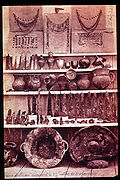 The so-called treasure of Priam, discovered by Schliemann in his excavation of Troy.
The so-called treasure of Priam, discovered by Schliemann in his excavation of Troy. Relief with Hittite warriors, in Hattusa.
Relief with Hittite warriors, in Hattusa.
Ancient Mediterranean Levant
The easternmost coastal area of the Mediterranean, due to its location between Africa and Asia and its favorable physical conditions, acted as a "corridor" between the sea and the desert, highly compartmentalized, although with river valleys running north-south (those of the Jordan and the Orontes), which made land communications between Africa, Asia and Europe possible. This role had been fulfilled since the Paleolithic and Neolithic (Jericho), and was accentuated with the first civilizations. The great empires of Egypt, Mesopotamia and Anatolia had their geostrategic contact zone in this area. The critical situation at the end of the II millennium BC. C. allowed the development of powerful local civilizations with a strong personality and influence on subsequent historical development (traits such as the alphabet or monotheism),
Phoenician manufactures (Museo Archeologico Nazionale - MIBAC)
 Theoretical reconstruction of Solomon's temple in Jerusalem.
Theoretical reconstruction of Solomon's temple in Jerusalem. Masada fortress, where the Roman legions besieged a Jewish garrison.
Masada fortress, where the Roman legions besieged a Jewish garrison. Weight with the symbol of the Phoenician goddess Tanit. Found on the island of Arados (Syria).
Weight with the symbol of the Phoenician goddess Tanit. Found on the island of Arados (Syria).
Ancient Syria, Jordan and Arabia
Between the Tigris and the Lebanon mountain range begins a vast desert area that extends south to the Arabian Peninsula. It represents an insurmountable obstacle for the development of agriculture beyond small areas of widely scattered oases, except in the area of Yemen (Arabia Felix —'Arabia happy'—). The economic activities that developed and allowed the formation of a peculiar civilization were, therefore, nomadic cattle ranching and the lucrative caravan routes of long-distance trade that connected all parts of the ancient world through the ports of the Red Sea, the Gulf of Aden and the Persian Gulf (open to the Indian Ocean —navigation to India and Indonesia—, to East Africa —where the relationship with Eritrea and Ethiopia was very close— and to the east coast of Egypt —Berenice—),
- pre-islamic arabia
- seleucid empire
- Syria (Roman province)
- history of syria
- History of Jordan
- Yemeni history
- Qatari
- Kingdom of Saba
- himyar
- awsan
- dilmun
- Nabataeans
- Lihyan
- Magan
- Petra
- palmyra
- Incense Route
Ancient Nile Valley
"Egypt is a gift of the Nile" (Herodotus), since few civilizations had such a decisive relationship with a river. Its annual flood allowed the fertility and very high population density of a narrow strip that runs through the uninhabited North African desert (“deserted” in the postglacial period) from the southern falls to the northern delta. The duality between Upper Egypt and Lower Egypt forged, on an extraordinarily stable peasant society linked by collective work on hydraulic works, institutions and a culture characterized by the sacralization of the figure of the pharaoh, the strength of the temples, an efficient bureaucracy and a complex religion of the afterlife. Within a great continuity over millennia (which has sometimes been interpreted as homogeneity or even stereotyping,
- Ancient Egypt
- hyksos
- Peoples of the Sea
- Nubians
- Kingdom of Kush
- kingdom of aksum
- Kingdom of Napata
- Kingdom of Meroe
- little beds
- Afro-Asian expansion
- Cushitic languages
- Egyptian languages
The opening of Tutankhamun's sarcophagus by Howard Carter in 1923, one of the most spectacular moments in archaeology. It was an intact tomb, and precisely that of the pharaoh whose brief reign (1336-1327 BC) meant a return to the traditional orthodoxy of the Egyptian religion after the heretical parenthesis of Akhenaten.
Ramses II, the most active of the pharaohs of the New Kingdom, in a relief from Abydos. The external expansion took to the north of Palestine, confronting the Hittites in the famous battle of Qadesh (1274), whose uncertain result allowed it to be presented as a victory on both sides, forced the maintenance of an early concept of "international balance" with sophisticated diplomatic negotiations, and gave rise to an interesting supporting program in texts and artistic monuments that make it the first battle in military history with enough information to be the object of a detailed study.
 Pyramids of Gebel Barkal, in the kingdom of Napata (or of the "black pharaohs" or Kushites ), strongly influenced by Egyptian culture. Current Sudan.
Pyramids of Gebel Barkal, in the kingdom of Napata (or of the "black pharaohs" or Kushites ), strongly influenced by Egyptian culture. Current Sudan.
Ancient Mediterranean and Europe
- pre-roman peoples
- colonizing peoples
- orientalizing
- Hellenism
- Romanization
Ancient Greece
Hellas is the geographical and cultural concept that covered in classical antiquity the territory inhabited by the Greeks or Hellenes, broader than today's Greece, and that would include the continental European territory that goes from the Peloponnese to the south to a diffuse separation with Macedonia, Thrace and Epirus to the north; in addition to the islands of the Aegean Sea and the Ionian Sea and the western coast of present-day Turkey (Ionia) to the Hellespont. The Greek colonies established throughout the Mediterranean were also assimilated to the concept of Hellas; and the extensive territories of the Hellenistic monarchies of Egypt and the Near East, which to a greater or lesser extent had been Hellenized, could also be understood as close to it.
 Model of the structure of the Palace of Knossos. It was an amazing palatine city located in Crete, with features never seen before (network of pipes, complex position on the interior steps, dimensions much higher than other contemporary palaces, etc.), so it is believed that the Minoan civilization, the Egyptians, not the Greeks, were inspired by the myth of Atlantis. Archaeological theories about the catastrophic end of the Minoan culture, associated with the so-called "Minoan eruption" of the volcano that produced the current caldera on the island of Santorini (17th century BC), also allow its association with this myth.
Model of the structure of the Palace of Knossos. It was an amazing palatine city located in Crete, with features never seen before (network of pipes, complex position on the interior steps, dimensions much higher than other contemporary palaces, etc.), so it is believed that the Minoan civilization, the Egyptians, not the Greeks, were inspired by the myth of Atlantis. Archaeological theories about the catastrophic end of the Minoan culture, associated with the so-called "Minoan eruption" of the volcano that produced the current caldera on the island of Santorini (17th century BC), also allow its association with this myth. Zeus, father of the gods and armed with lightning, as corresponds to Greek mythology, presides over the Sanctuary of Olympia where they were celebrated in his honor since the 8th century BC. C. the Olympic Games, milestones that marked the calendar and one of the most important legacies of classical civilization. The colossal statue of gold and ivory, 12 meters high, was due to Phidias (5th century BC), and was counted among the seven wonders of the ancient world. Destroyed in the 5th century AD. C., this engraving is a recreation of modern times.
Zeus, father of the gods and armed with lightning, as corresponds to Greek mythology, presides over the Sanctuary of Olympia where they were celebrated in his honor since the 8th century BC. C. the Olympic Games, milestones that marked the calendar and one of the most important legacies of classical civilization. The colossal statue of gold and ivory, 12 meters high, was due to Phidias (5th century BC), and was counted among the seven wonders of the ancient world. Destroyed in the 5th century AD. C., this engraving is a recreation of modern times. The Macedonian Empire was the largest in the ancient world, and also the most short-lived: it did not outlive its founder, Alexander the Great. In his youth, after succeeding his father Philip II of Macedon (who had previously unified the Greek polis), he applied the efficient war machine formed by Philip II to the defeat of the Persian Empire, the enemy of the Greeks since the Persian Wars. . His deed expanded Greek culture throughout the Near East and into Central Asia and India, beginning the period called Hellenism.
The Macedonian Empire was the largest in the ancient world, and also the most short-lived: it did not outlive its founder, Alexander the Great. In his youth, after succeeding his father Philip II of Macedon (who had previously unified the Greek polis), he applied the efficient war machine formed by Philip II to the defeat of the Persian Empire, the enemy of the Greeks since the Persian Wars. . His deed expanded Greek culture throughout the Near East and into Central Asia and India, beginning the period called Hellenism.The stadium of Aphrodisias, one of the few vestiges that remain of this Greco-Roman city, known in its time for its beautiful marble buildings. The stadium is, in fact, a cross between a coliseum and a Greek track. The reason for this is because they held bloody battles and games like discus throwing at the same time.
Ancient Mediterranean Islands
Many Greek myths were situated on coasts or islands located in an indefinite “extreme West” (Vulcan —Hephaistos—, Labors of Hercules —Heracles, Pillars of Hercules, Geryon, Atlas—, Atlantis, Garden of the Hesperides, Odyssey —Cyclops, Laestrigones , Mermaids, Scylla and Charybdis, Ogygia, Lotófagos—); others were located in a less clear direction, or rather in the eastern Mediterranean (towards the Black Sea —the Colchis of the voyages of Jason, the Argonauts and the Golden Fleece—, the south of the Aegean —the Crete of Minos, Daedalus, Icarus, and the Minotaur defeated by the Athenian Theseus; or the abduction of Europa—or the Cyprus of the birth of Aphrodite).
Ancient cyprus
- history of cyprus
Ancient Western Mediterranean Islands
- Megalithism
- history of corsica
- Corsicans
- History of Sardinia
- Sardinians
- History of Sicily (Sicily).
- Siculus
- Sicans
- Elymos
- Aeolian Islands
- History of the Balearic Islands (Balearic Islands —Balearic, Balearic slingers, Quinto Cecilio Metelo Balearico—).
- Maltese history
- Joy
- Djerba
- Battle of Allalia
- Magna Greece
- Battle of Himera
- Expedition to Sicily
- Punic Wars
Ancient Northwest Africa
- libiophoenicians
- carthage
- Kingdom of Mauritania
- Kingdom of Numidia
- Guanches
- Berber languages
 Capitol of Sbeitla
Capitol of Sbeitla
Ancient western europe
- Germans
- Britons
- Picts
- Hibernians
- Celts
- Gallic peoples
- Ancient history of the Iberian Peninsula
- Paleohispanic languages
- Pre-Roman peoples of the Iberian Peninsula
- Tartessos
- Peoples contemporary to the Roman conquest of Hispania:
- Peoples of the eastern and southern zone (Mediterranean fringe, Pyrenees, Ebro valley, Betic Cordilleras and Guadalquivir valley), generically called Iberians: Laietans, Aussetans, Lacetans, Indigetes, Ilergetes, Iacetans —more related to the Aquitanians—, Suessetans , sedetans, edetanos, ilercavones, turdetanos, túrdulos, contestanos, oretanos, bastetanos, etc.
- Peoples of the western zone (current Portugal) and central zone (Central Plateau and the Iberian System): Celts, Lusitanians, Vetones, Carpetani, Celtiberians, Vacceos, etc.
- Peoples of the northern zone or Cantabrian fringe: Galicians, Asturians, Cantabrians, Autrigones, Várdulos, Turmogos, Berones, Caristios, Vascones, etc.
- roman britain
- Gaul
- Slang
- roman hispania
 Treasure of El Carambolo, attributed to the Tartessian culture (southwest of Spain).
Treasure of El Carambolo, attributed to the Tartessian culture (southwest of Spain). Guisando bulls, pre-Roman sculptures in Carpetania (central Spain).
Guisando bulls, pre-Roman sculptures in Carpetania (central Spain). The Aqueduct of Segovia is one of the examples of the deep romanization of Hispania. It conducts the water over a distance of 15 km, overcoming a deep valley, until it reaches the hillock occupied by the city, which makes it the longest preserved Roman aqueduct.
The Aqueduct of Segovia is one of the examples of the deep romanization of Hispania. It conducts the water over a distance of 15 km, overcoming a deep valley, until it reaches the hillock occupied by the city, which makes it the longest preserved Roman aqueduct.
Ancient Italy and Rome
The Roman Empire had an impact far greater than its own spatial extension (almost six million square kilometers, already one of the largest among empires of all time)and its temporal duration (from 27 BC to 476 AD in the West and 1453 in the East); for being the political institution and the decisive economic-social formation for the conformation of Western civilization, which to a large extent can be considered a survival of it. Through it, its legal and institutional concepts survived (Roman law, Roman municipality, Roman province, Roman senate...), artistic and cultural (classical art and culture, Roman town planning, Roman roads, Roman theatre, baths, aqueducts... .) and the language itself (Latin). Romanization was a process that was very syncretic, since it incorporated cultural traits of the conquered peoples. Most especially, he identified himself with the Greek civilization, which Rome recognized as superior to its own, except in political and military matters.(Ex Oriente Lux, Ex Occidente Dux) . In its final period, the Judeo-Christian contribution was decisive.
 Etruscan frescoes from the "tomb of the leopards" (Tarquinia), where a symposium is represented , a social custom with clear Greek influence, represented here with the colors and festive conception typical of Etruscan painting. The Etruscans developed a civilization with orientalizing characteristics within the Italian sphere, of which they were the dominant power until Rome, the Latin capital that was subject to Etruscan kings (Roman Monarchy), ended up imposing itself in the early days of the Republic (from the 5th century BC to the 3rd century BC).
Etruscan frescoes from the "tomb of the leopards" (Tarquinia), where a symposium is represented , a social custom with clear Greek influence, represented here with the colors and festive conception typical of Etruscan painting. The Etruscans developed a civilization with orientalizing characteristics within the Italian sphere, of which they were the dominant power until Rome, the Latin capital that was subject to Etruscan kings (Roman Monarchy), ended up imposing itself in the early days of the Republic (from the 5th century BC to the 3rd century BC). Bust of Julius Caesar, the last "strong man" of the Republic (others were Gaius Marius, Sulla or his main rival, Pompey), and immediate predecessor of the Roman Empire, who designed his heir Octavio Augustus in the form of a principality (end of the 1st century BC). The territorial expansion of Rome and the republican civil wars meant socially the overcoming of the initial opposition between patricians and plebeians and the constitution of a slave mode of production that raised a very powerful aristocracy.
Bust of Julius Caesar, the last "strong man" of the Republic (others were Gaius Marius, Sulla or his main rival, Pompey), and immediate predecessor of the Roman Empire, who designed his heir Octavio Augustus in the form of a principality (end of the 1st century BC). The territorial expansion of Rome and the republican civil wars meant socially the overcoming of the initial opposition between patricians and plebeians and the constitution of a slave mode of production that raised a very powerful aristocracy. Plan of the Colosseum in Rome or Flavian Amphitheater, where 5,000 spectators sat to watch bloody spectacles such as battles between gladiators or with wild beasts, and even naval battles (naumaquias). The expression panem et circensis ('bread and circus') declared the demagogic intention of flattering and brutalizing the popular masses while guaranteeing their support for the imperial figure; much as the leaders of the final phase of the Roman Republic had done.
Plan of the Colosseum in Rome or Flavian Amphitheater, where 5,000 spectators sat to watch bloody spectacles such as battles between gladiators or with wild beasts, and even naval battles (naumaquias). The expression panem et circensis ('bread and circus') declared the demagogic intention of flattering and brutalizing the popular masses while guaranteeing their support for the imperial figure; much as the leaders of the final phase of the Roman Republic had done. Phases of the territorial expansion of Rome, from the initial Latium to the maximum extension in the time of Trajan (2nd century), and the subsequent division of the empire and fall of the West.
Phases of the territorial expansion of Rome, from the initial Latium to the maximum extension in the time of Trajan (2nd century), and the subsequent division of the empire and fall of the West.
Old Balkans and Eastern Europe
- Early metallurgical civilizations in southeastern Europe
- Illyrians
- peonies
- Dacians
- Macedonians
- Thracians
- Scythians
- Sarmatians
- Wends (Venedi or Proto Slavs).
- Kingdom of Epirus
- Pyrrhic Wars
- Illyrian Wars
- Pannonia
- Illyrian
- Illyrian
- Dalmatia
- Thrace
- Dacia
- messiah
- scythia
- Kingdom of Pontus
- Kingdom of the Bosphorus
- spartocides
- Tauros ( tauroi or tauri )
- History of Crimea (Crimea)
- greek crimea
- roman crimea
- Byzantium
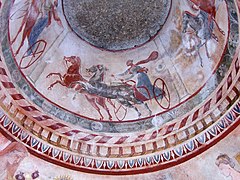 Thracian tomb of Kazanlak (in Bulgaria).
Thracian tomb of Kazanlak (in Bulgaria). Scythian iron acinaces (7th to 5th century BC).
Scythian iron acinaces (7th to 5th century BC).
Ancient North Eurasia
- Siberian history
- Uralic languages
- Altaic languages
- Finno-Ugric languages
- Samoyedic languages
Ancient Central and South Asia
The steppes of Central Asia historically had a close relationship (dialectic of nomadic and sedentary peoples) with the plain of Hindustan, and this with the Deccan Peninsula. The land connection with the Middle East through the deserts of Iran was, on the other hand, more compromised, while navigation through the Arabian Sea allowed more fluid routes. However, all of them were experienced, sometimes during the same expedition, as was the case of Alexander the Great (326).
- Central Asia
- South Asia
- Indus Valley Culture
- Aryans
- magadha
- mauriya empire
- Turkic peoples
- Huns and Hephthalites
- Scythians
- Civilization of the Oxus (Bactria-Margiana archaeological complex).
- Andronovo Culture
- Chorasmia
- Bactrian
- Sogdiana
- Margiana
- Balochistan
- Gedrosia
- Tocharians
- kushan empire
- Indo-European languages
- Sanskrit
- Elamo-Dravidian languages
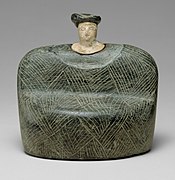 Seated woman, painted terracotta from the Oxus civilization, around 2000 BC. c.
Seated woman, painted terracotta from the Oxus civilization, around 2000 BC. c.Fragment of the sixth decree of the Pillar of Asoka, around 238 BC. C. It probably comes from Pilar Meerut, in Uttar Pradesh (India). Today it is in the British Museum.
- history of afghanistan
- History of Uzbekistan
- History of Turkmenistan
- History of Tajikistan
- history of pakistan
- Indian history
- Silk Road
- Hinduism
- rig-veda
- Mahabharata
- ramayana
- Buddhism
- Jainism
- Greco-Buddhism
- Nestorianism
Coin of Azes I, Indo-Greek-Scythian king of the 1st century BC. c.
 Hillside containing the Buddhas of Bamiyan (Afghanistan, around the 5th century), destroyed by the Taliban in 2005.
Hillside containing the Buddhas of Bamiyan (Afghanistan, around the 5th century), destroyed by the Taliban in 2005.
Ancient far east
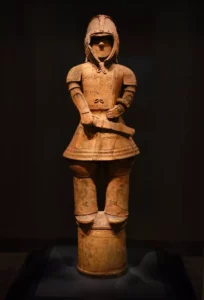
The geographical isolation of this area is marked by the highest mountain ranges in the world: the Himalayas, the Altai, the Hindu Kush, the Tian Shan, the Pamirs and the Karakorum; and some of the largest and driest deserts: the Taklamakan and the Gobi. Even maritime communications between India and China are difficult (exposure to the monsoons, prolonged navigation due to the interposition of the Indochina peninsula and the Malacca peninsula, which requires crossing through areas such as the Sunda Strait or the Strait of Malacca). Still, there were contacts, as evidenced by the continuity of trade routes and the spread of technologies, alphabets, and religions (Hinduism to Southeast Asia and Buddhism to Tibet, China, and Japan). However, the difficulty of that contact was perceived as the result of a journey of mythical dimensions (Journey to the West ).
- chinese history
- history of japan
- history of korea
- Vietnamese history
- history of thailand
- history of cambodia
- Lao history
- Indonesian history
- history of burma
- history of tibet
- Mongolian history
- Sino-Tibetan languages
- Turkic languages
- mongolian languages
- Altaic languages
- Tungusic languages
- Austronesian languages
- Malayo-Polynesian languages
 Terracotta Army war chariot, guarding the impressive tomb of Qin Shi Huang, first Emperor of China (3rd century BC)
Terracotta Army war chariot, guarding the impressive tomb of Qin Shi Huang, first Emperor of China (3rd century BC)Sword-shaped bronze pieces used as currency. Yan State, Warring States, China, 4th century BC. C. to the 2nd century BC c.
 9th century Chinese fresco depicting Buddhist monks; the one on the left with Tocharian features. Bezeklik Grottoes or Thousand Buddha Grottoes, located in Qian Fo Dong, Tarim Basin, Sinkiang, in the Uyghur Autonomous Region (China).
9th century Chinese fresco depicting Buddhist monks; the one on the left with Tocharian features. Bezeklik Grottoes or Thousand Buddha Grottoes, located in Qian Fo Dong, Tarim Basin, Sinkiang, in the Uyghur Autonomous Region (China).
- Tocharians
- mongols
- Ordos
- Altai, Altay, Altaic languages and Altaic peoples; Oiratos and Kalmyk people.
- Turkic peoples
- Tungusian peoples
- Huns
- Uyghurs
- Xiongnu
- Han ethnic group
- Ainu
- Japanese
- Koreans
- Sinhalese
- Javanese
- Malays
- Tagalogs
- Cambodians
- Vietnamese
- Chinese traditional religion
- chinese mythology
- Confucianism
- Taoism
- Buddhism
- Majaiana
- japanese mythology
- Shinto
- Zen
- Hinduization of the Indochinese Peninsula
 Prasasti (inscribed stone) from the era of Purnawarman, king of Tarumanagara (Tugu, Jakarta, Java Island, Indonesia, 5th century BC), a highly Hindu-influenced civilization
Prasasti (inscribed stone) from the era of Purnawarman, king of Tarumanagara (Tugu, Jakarta, Java Island, Indonesia, 5th century BC), a highly Hindu-influenced civilizationSilver horse from the Ordos culture, a people of the Ordos Desert (Inner Mongolia, present-day China), 4th century BC. C. to the 1st century BC c.
 Yumbulagang, a fortress that is considered to be the first construction built in Tibet, and that would have been founded by its first mythological king, Nyatri Tsenpo (around the 2nd century BC)
Yumbulagang, a fortress that is considered to be the first construction built in Tibet, and that would have been founded by its first mythological king, Nyatri Tsenpo (around the 2nd century BC) Linga of the Cát Tiên sanctuary (Vietnam), an enigmatic site dating back to the 4th century
Linga of the Cát Tiên sanctuary (Vietnam), an enigmatic site dating back to the 4th century
Ancient sub-saharan africa
The Sahara desert and the difficulties of the upper course of the Nile represented two formidable geographical barriers that caused a very important cultural discontinuity between North Africa and Sub-Saharan Africa. However, they were permeable enough to allow contact through caravan routes with the area of the Niger River and the Gulf of Guinea, and contact through the Red Sea with Eritrea and Ethiopia, areas strongly linked to the Arabian Peninsula. The special case of Madagascar is a consequence of the origin of the Malagasy population, related through the Indian Ocean to other Malayo-Polynesian populations.
Ancient america
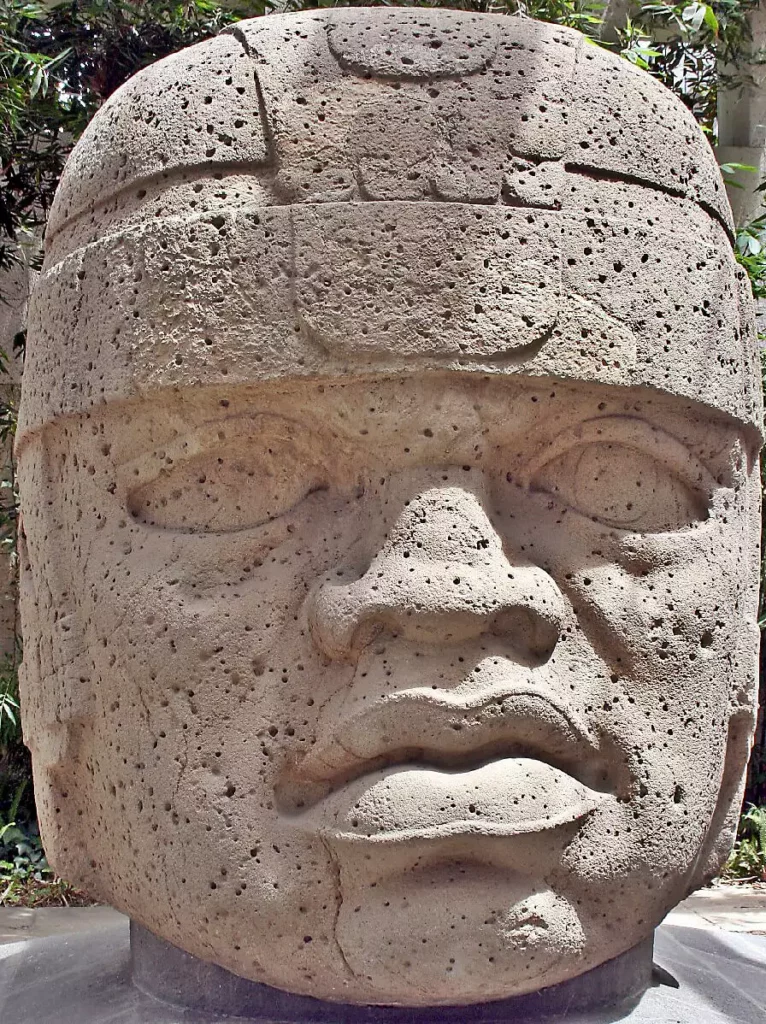
In pre-Columbian America, two different civilizational centers arose: the Andean region around the fourth millennium BC. C. and Mesoamerica around the II millennium BC. c.
Ancient Andes
 Gate of the Sun (Tiahuanaco, Bolivia).
Gate of the Sun (Tiahuanaco, Bolivia). Piquillacta Street (Huari culture), Peru, 6th to 12th century AD. c.
Piquillacta Street (Huari culture), Peru, 6th to 12th century AD. c. Chrome tomb of the San Agustín Culture, Colombia, 7th century BC. c.
Chrome tomb of the San Agustín Culture, Colombia, 7th century BC. c.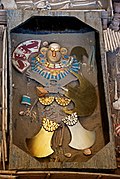 Tomb of the Lord of Sipán (Lambayeque Culture, Peru, 3rd century).
Tomb of the Lord of Sipán (Lambayeque Culture, Peru, 3rd century). Machu Pichu (Inca culture, Peru, XV century).
Machu Pichu (Inca culture, Peru, XV century).
The first known complex societies in South America, Sechín and Caral, emerged around the fourth millennium BC on the central coast of present-day Peru. In the twelfth century a. C., the culture of Chavín or Cupisnique spread throughout the coast and the central Andes, giving way after its decline to various regional styles such as Paracas, Vicús, Cajamarca, Moche, Recuay, Lima, Pucará, Nazca, Huarpa and Tiahuanaco. Around the seventh century, the influence of Nazca and Tiahuanaco over Huarpa, added to local developments in agriculture and irrigation, led to the emergence of Huari as a large urban and militarized state that expanded its domain throughout much of the region previously influenced by Chavín. , except for southern Tiahuanacota. At the fall of Huari and Tiahuanaco in the 10th century, political power is fragmented into various manors with diverse cultural styles. At this time, Lambayeque, Chimú, Chancay, Ychsma, Maranga and Chincha developed on the coast, along with Chachapoyas, Huamachuco, Huancas, Chancas, Collas, Lupaca, Chiribaya and Incas in the highlands. Around 1438, the Inca Pachacuti leads the expansion of the Inca Empire to the south of present-day Colombia and northwestern Argentina. The long cultural succession has an abrupt change with the Spanish Conquest in the 16th century. the Inca Pachacuti leads the expansion of the Inca Empire to the south of present-day Colombia and northwestern Argentina. The long cultural succession has an abrupt change with the Spanish Conquest in the 16th century. the Inca Pachacuti leads the expansion of the Inca Empire to the south of present-day Colombia and northwestern Argentina. The long cultural succession has an abrupt change with the Spanish Conquest in the 16th century.
Mesoamerica
 Olmec colossal head (Xalapa, Mexico).
Olmec colossal head (Xalapa, Mexico). Mayan stela, in Copan (Honduras).
Mayan stela, in Copan (Honduras). Pyramid of the Tiger in the Mayan city of El Mirador (Petén, Guatemala, late preclassic, around 600 BC). It also included the La Danta Pyramid, currently hidden by the jungle, a religious complex larger than the Great Pyramid of Giza.
Pyramid of the Tiger in the Mayan city of El Mirador (Petén, Guatemala, late preclassic, around 600 BC). It also included the La Danta Pyramid, currently hidden by the jungle, a religious complex larger than the Great Pyramid of Giza. Aztec calendar
Aztec calendar
The isthmus-Colombian area
- Intermediate Area
- Muisca culture
- Tayrona culture
- San Agustin Culture
Ancient caribbean
Ancient oceania
- Oceania
- Pacific Ocean
- history of oceania
- Melanesian
- Polynesia
- Micronesia
- The pita
- Tongan history
- Aborigines australians
- Maori
- samoan mythology
- Hawaiian religion
- tanager
- Austronesian languages
- Malayo-Polynesian languages
- oceanic languages
 The extraordinary extent of Polynesian colonization in the Pacific (Pacific exploration, Polynesian navigation), in a triangle whose vertices are New Zealand, Hawaii and Easter Island, and whose center is Tahiti. The ethnographic unity of this culture is observed in physical, linguistic, ideological, social and economic anthropological characteristics (certain crops and livestock —pigs and birds—).
The extraordinary extent of Polynesian colonization in the Pacific (Pacific exploration, Polynesian navigation), in a triangle whose vertices are New Zealand, Hawaii and Easter Island, and whose center is Tahiti. The ethnographic unity of this culture is observed in physical, linguistic, ideological, social and economic anthropological characteristics (certain crops and livestock —pigs and birds—).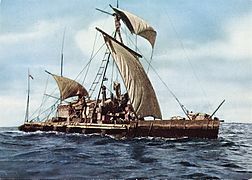 Thor Heyerdahl's expedition on the Kon-tiki was an imaginative attempt at experimental archeology or anthropology that sought to verify the possibility of travel between South America and the Pacific, based on the navigation capacity of rafts similar to "caballitos de totora" of Lake Titicaca. However, the most usual interpretation of the archaeological and anthropological evidence maintains that the original settlement of the population of America was carried out by land, and from north to south, while that of Oceania was carried out from west to east.
Thor Heyerdahl's expedition on the Kon-tiki was an imaginative attempt at experimental archeology or anthropology that sought to verify the possibility of travel between South America and the Pacific, based on the navigation capacity of rafts similar to "caballitos de totora" of Lake Titicaca. However, the most usual interpretation of the archaeological and anthropological evidence maintains that the original settlement of the population of America was carried out by land, and from north to south, while that of Oceania was carried out from west to east. Symbols of the Maori gods. Tangaroa would be a deified hero whose genealogy is preserved in Polynesian myths, maintained by oral tradition, and which allow successive migrations to be described and even dated that would begin from some point in Indonesia (possibly the Island of Java, it has been calculated in the third century BC) and would continue by radiation from island to island until reaching the maximum expansion in the 12th century .
Symbols of the Maori gods. Tangaroa would be a deified hero whose genealogy is preserved in Polynesian myths, maintained by oral tradition, and which allow successive migrations to be described and even dated that would begin from some point in Indonesia (possibly the Island of Java, it has been calculated in the third century BC) and would continue by radiation from island to island until reaching the maximum expansion in the 12th century .
Maps and chronology of the Ancient Age
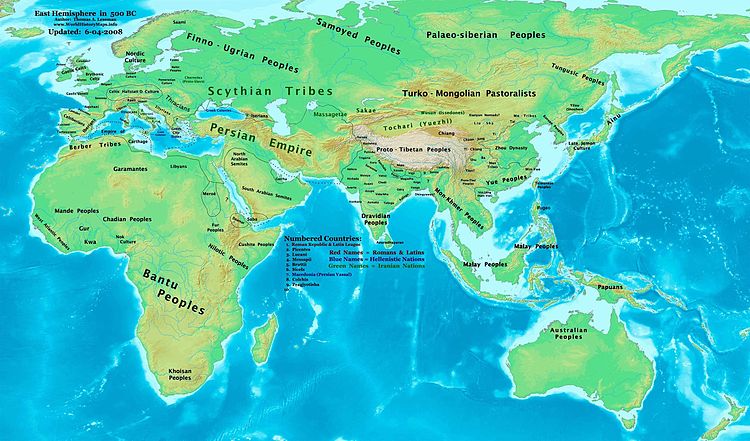 The Old World around
The Old World around
500 BC. c.

Historical formations around the Mediterranean and near-eastern space
On a white background, the periods considered prehistoric (without the presence of writing —the existence of proto-writing in some cultures is a controversial issue—), on a slightly shaded background, the historical periods (with the presence of writing —the first scripts and alphabets, in pink letters—), on a background of different colors, the different empires (political entities of great extension, which reaches at least one of the areas considered in this scheme). The table follows the Western narrative, that is, ending with the fall of the Western Roman Empire.
| Century or Millennium | Aegean andBalkans | Peninsulaitalic | from the alpsto the Pyrenees | Iberian Peninsula | north west africa | Egypt | Levant and Asia Minor | Mesopotamia | Iran and Central Asia |
|---|---|---|---|---|---|---|---|---|---|
| 5th millennium BC c. | Neolithic and Chalcolithic (prehistoric)DanubianSesklo, Dimini, Vinca, Gumelnitsa | Neolithic (prehistoric)cardial ceramicssquare mouth | Neolithic (prehistoric)pottery bandingcardial pottery, Rössen, Chassey, La Hoguette | Neolithic (prehistoric)cardial ceramics | Neolithic (prehistoric ) | Neolithic (prehistoric )Predynastic | Neolithic and Chalcolithic (prehistoric ) | Neolithic and Chalcolithic (prehistoric )The Obeid | Neolithic and Chalcolithic (prehistoric ) |
| IV millennium BC c. | Neolithic and Chalcolithic (prehistoric)DispilioGumelnitsa | Neolithic (prehistoric)square mouth | Neolithic (prehistoric) megalithismChassey, Pfyn | Neolithic (prehistoric)pit graves | tehenuTehenu palette (Egyptian, protohistoric) | ChalcolithicPredynasticProtodynastichieroglyphic writing | Chalcolithic (prehistoric)UrukJemdet Nasr | ChalcolithicUrukJemdet Nasrcuneiform writing | Chalcolithic (prehistoric) Proto-Elamite |
| III millennium BC c. | Chalcolithic (prehistoric)CycladicMinoan civilizationBronze Age (prehistoric) | Chalcolithic (prehistoric)beaker, Remedello, Rinaldone, Gaudo, Laterza, Polada | Chalcolithic (prehistoric)bell-shaped vessel, Horguen, SOM | Chalcolithic (prehistoric)beakermegalithismThe Thousands | Chalcolithic (prehistoric)megalithism (prehistoric)temehu | Archaic or TiniteAncient empirehieratic scriptIntermediate I | akkadian empire | Archaic Dynastic or Protodynasticsumerian citiesakkadian empireSumerian revival | Proto-Elamiteakkadian empireSumerian revival |
| II millennium BC c. | Aegean andBalkans | Peninsulaitalic | from the alpsto the Pyrenees | Iberian Peninsula | north west africa | Egypt | Levant and Anatolia | Mesopotamia | Iran and Central Asia |
| 20th century BC c. | Minoan civilization | bronze age(prehistoric)Apennian culture, Polada | bronze age(prehistoric)beaker | Bronze Age (prehistoric)beaker | Bronze Age (prehistoric) | Middle Kingdom | hittites | assyrian empire | Elam |
| 19th century BC c. | Minoan civilization | Apennian culture, Polada(prehistoric) | bell-shaped vessel (prehistoric) | The Argar(prehistoric, Southeast) | Middle Kingdom | assyrian empire | assyrian empire | Elam | |
| 18th century BC c. | Minoan civilization | Apennian culture, Polada(prehistoric) | bell-shaped vessel (prehistoric) | The Motillas(prehistoric, South Plateau) | Middle KingdomIntermediate II | hittitesHurriansAleppoProto-Sinaitic script | babylonian empire | Elam | |
| 17th century BC c. | Minoan civilizationlinear A | Apennian culture, Polada(prehistoric) | bell-shaped vessel (prehistoric) | Cogotas I(prehistoric, North Plateau) | Intermediate IIhyksos | hittitesHurriansAleppo | babylonian empire | Elam | |
| 16th century BC c. | Minoan civilizationmycenaeanslinear b | Terramaras(prehistoric) | burial mounds (prehistoric) | Vila Nova (prehistoric, lower Tagus) | Intermediate IInew kingdom | hittitesMitannilinear C | Mitannilittle houses | Elam | |
| 15th century BC c. | Minoan civilizationmycenaeans | Terramaras(prehistoric) | burial mounds (prehistoric) | Atalaia (prehistoric, southwestern) | new kingdom | hittitesMitanninew kingdom | Mitannilittle houses | Elam | |
| 14th century BC c. | Minoan civilizationmycenaeans | Terramaras(prehistoric) | burial mounds (prehistoric) | pretalayotic culture(prehistoric, Balearic Islands) | mashuash | new kingdom | hittitesnew kingdom | Assyrian Middle Kingdom | Elam |
| 13th century BC c. | mycenaeanssea townsDorian invasion?Iron Age (prehistoric) | urn fieldsproto-Villanovaitalic peoples(prehistoric) | urn fields (prehistoric) | Talayotic culture(prehistoric, Balearic Islands) | libu | new kingdomsea towns | hittitesnew kingdomsea townsbattle of kadeshugaritic alphabet | Assyrian Middle Kingdom | Elam |
| 12th century BC c. | Dark Ages (prehistoric)Dorians | proto-Villanovaitalic peoples(prehistoric) | Hallstatt("Celts", prehistoric) | urn fields(prehistoric, Northeast) | libu | new kingdom | iron agePhrygians, Lydians, Hittites, Phoenicians, Philistines, Arameansphoenician alphabet | Assyrian Middle KingdomArameans | ElamAssyrian Middle Kingdom |
| eleventh century BC c. | Dark Ages (prehistoric)ionians | proto-Villanovaitalic peoples(prehistoric) | Hallstatt("Celts", prehistoric) | Cadiz Foundation(first Phoenician colony) | libu | new kingdomIntermediate III | Phrygians, Lydians, Phoenicianskingdom of israelArameans | Arameans | Elam |
| 1st millennium BC c. | Aegean andBalkans | Peninsulaitalic | from the alpsto the Pyrenees | Iberian Peninsula | north west africa | Egypt | Levant and Anatolia | Mesopotamia | Iran and Central Asia |
| 10th century BC c. | Dark Ages (prehistoric)greek copsIllyrians | Iron Age (prehistoric)Villanovaitalic peoples | Hallstatt("Celts", prehistoric) | preiberosCelts (prehistoric) | Paleo-Berbers, pre-Libyans | Intermediate III | Phrygians, Lydians, Phoenicianskingdom of israelkingdom of judahpaleo-hebrew alphabetAramean and Neo-Hittite kingdoms | aramaic kingdoms | Elam |
| 9th century BC c. | Dark Agegreek copsgreek alphabetIllyrians | "Gauls" or "Celts"etruscansitalic peoples(prehistoric and protohistoric) | Hallstatt("Celts", prehistoric) | preiberoscelts(prehistoric) | Phoenician colonizationfoundation of Carthage (protohistory)Paleo-Berbers, pre-Libyans | Intermediate III | Phrygians, Lydians, Phoenicianskingdom of israelkingdom of judahAramean and Neo-Hittite kingdomsearly arabic alphabets | aramaic kingdomsAssyrian New Kingdom | ElamAssyrian New Kingdom |
| 8th century BC c. | Archaicfirst olympicsHomerpolis and coloniesIonian LeagueIllyrians | "Gauls" or "Celts"italic peoplesetruscansetruscan alphabetfounding of Romegreek colonies | iron ageHallstatt("Celts", prehistoric) | Iron Age (prehistoric)celtsIberiansgreek coloniesphoenician coloniesTartessos (protohistory) | phoenician coloniescarthagePaleo-Berbers, pre-Libyans | Intermediate IIIdemotic scriptAssyrian New Kingdom | Phrygians, LydiansCaptivity of NinevehAssyrian New KingdomUrartuAramean and Neo-Hittite kingdomsaramaic alphabet | Assyrian New Kingdom | Elammedian empire |
| 7th century BC c. | Archaictyrantsgreek legislatorsIllyrians, Macedonians, Thracians | italic peoplesetruscansroman monarchylatin alphabetSamnitesMagna Greece | Hallstatt("Celts", prehistoric) | celtsIberiansgreek coloniesphoenician coloniesTartessospaleohispanic writings | phoenician coloniescarthagePaleo-Berbers, LibyansCyrenaica (Greco-Egyptians) | Intermediate IIIAssyrian New KingdomLate or Saite | Phrygians, Lydians, Phoeniciansassyrian empireNeo-Babylonian Empire | Assyrian New KingdomNeo-Babylonian Empire | Assyrian New KingdomNeo-Babylonian Empiremedian empire |
| 6th century BC c. | Archaictyrantsathenian democracyachaemenid empireIllyrians, Macedonians, Thracians | italic peoplesetruscansroman monarchyroman republicMagna Greece | Hallstatt("Celts", prehistoric)Antipolis and Massilia(early Greek colonies, protohistory) | celtsIberiansgreek coloniesTartessoscarthaginian empire | Battle of Alaliacarthaginian empirePaleo-Berbers, LibyansCyrenaica (Greco-Egyptians) | Late or Saiteachaemenid empire | site of tireBabylonian captivityNeo-Babylonian Empireachaemenid empire | Neo-Babylonian Empireachaemenid empire | achaemenid empire |
| 5th century BC c. | achaemenid empireMedical Warsdelian leaguePeloponnesian LeaguePeloponnesian WarIllyrians, Kingdom of Macedon, Thracians | italic peoplesetruscansroman republicMagna Greece | La Tene(prehistoric)greek colonies | celtsIberiansgreek coloniescarthaginian empire | carthaginian empirePaleo-Berbers, Libyans, GaramantesCyrenaica (Greco-Egyptians) | achaemenid empire | achaemenid empire | achaemenid empire | achaemenid empire |
| 4th century BC c. | battle of chaeroneaAlexander's EmpireIllyrians | etruscansroman republicitalic peoplesRoman conquest of ItalyMagna Greece | La Tene(prehistoric)Greek colonies | celtsIberiansgreek coloniescarthaginian empire | carthaginian empirePaleo-Berbers, Libyans, GaramantesCyrenaica (Greco-Egyptians) | achaemenid empireAlexander's Empire | achaemenid empireBattle of the Granicusbattle of issussite of tiregaza siegeAlexander's Empire | Battle of GaugamelaAlexander's Empire | site of the Sogdian RockAlexander's Empire |
| 3rd century BC c. | kingdom of macedonKingdom of EpirusAchaean LeagueAetolian LeagueIllyrians | Pyrrhic Warscarthaginian empirePunic Warsroman republic | Gaulsgreek coloniesPunic Warsroman republic | pre-roman peoplesgreek coloniescarthaginian empirePunic Warsroman republic | carthaginian empireBattle of ZamaPaleo-Berbers, Libyans, GaramantesCyrenaica (Greco-Egyptians) | Ptolemaic dynasty (Greco-Egyptians) | seleucid empireKingdom of Pergamon | seleucid empire | seleucid empirechildbirthGreco-Bactriansindo greeks |
| 2nd century BC c. | kingdom of macedonKingdom of EpirusAchaean LeagueAetolian Leaguemacedonian warsIllyriansroman republic | roman republic | Gaulsroman republic | Celtiberians and Lusitanianssiege of numanciaroman republicCantabrian and Asturian | carthagethird punic warroman republicKingdom of NumidiaKingdom of MauritaniaPaleo-Berbers, Libyans, Getulos, GaramantesCyrenaica (Greco-Egyptians) | Ptolemaic dynasty (Greco-Egyptians) | Kingdom of PergamonKingdom of ArmeniaKingdom of PontusmacabeesNabataeans | seleucid empirechildbirth | childbirthGreco-Bactriansindo greeks |
| 1st century BC c. | roman republichigh roman empire | roman republichigh roman empire | GaulsGallic WarsBattle of Alesiaroman republichigh roman empire | roman republicCantabrian and AsturianCantabrian Warshigh roman empire | roman republicKingdom of NumidiaKingdom of MauritaniaJugurtha WarPaleo-Berbers, Libyans, Getulos, GaramantesCyrenaica (Greco-Egyptians)high roman empire | ptolemaic dynastyBattle of Actiumhigh roman empire | mithridatic warsroman republichigh roman empireNabataeans | childbirth | childbirthtocharianindo greeks |
| 1st millennium | Aegean andBalkans | Peninsulaitalic | from the alpsto the Pyrenees | Iberian Peninsula | north west africa | Egypt | Levant and Anatolia | Mesopotamia | Iran and Central Asia |
| 1st century | high roman empire | high roman empire | high roman empire | high roman empire | high roman empireKingdom of Mauritania | high roman empire | high roman empireFirst Jewish-Roman WarNabataeans | childbirth | childbirthtocharianindo greeks |
| 2nd century | high roman empire | high roman empire | high roman empire | high roman empire | high roman empire | high roman empire | high roman empire | childbirthhigh roman empire | childbirthKushan Empire |
| 3rd century | Under Roman Empire | Under Roman Empire | Under Roman Empire | Under Roman Empire | Under Roman Empire | Under Roman Empirepalmyra empire | Under Roman Empirepalmyra empire | Sassanid EmpireUnder Roman Empirepalmyra empire | Sassanid EmpireKushan Empire |
| fourth century | Eastern Roman Empire | western roman empire | western roman empire | western roman empire | western roman empire | Eastern Roman Empire | Eastern Roman Empire | Sassanid EmpireEastern Roman Empire | Sassanid EmpireKushan Empire |
| V century | Eastern Roman Empire | western roman empireostrogothic kingdom | germanic invasionsVisigoth kingdom of Tolosa | germanic invasionsswebian kingdomVisigoth kingdom of Tolosa | Vandal Kingdom of Africa | Eastern Roman Empire | Eastern Roman Empire | Sassanid EmpireEastern Roman Empire | Sassanid Empirewhite huns |
| Western Mediterranean (Roman hegemony after the Punic Wars): Roman Republic, with the city of Rome, the territories of the Italian peninsula subject to different legal and citizenship considerations, and its provinces in Sicily, Sardinia, Corsica, Hispania and Dalmatia Kingdom of Mauritania Kingdom of Numidia Carthaginian RepublicEastern Mediterranean :-Greece: Kingdom of Epirus kingdom of macedon Aetolian League Achaean League | -Egypt: ptolemaic empire-Asia Minor and Black Sea: Rhodes Kingdom of the Bosphorus kingdom of cappadocia Galatia Kingdom of Bithynia Kingdom of Pergamon Kingdom of Armenia Kingdom of Pontus-Levante, Mesopotamia and Central Asia: seleucid empire deliveries Greco-Bactrian Kingdom maurian empire |
Contenido relacionado
Lyre (musical instrument)
Pre-Columbian Civilizations
Piracy in the Canary Islands